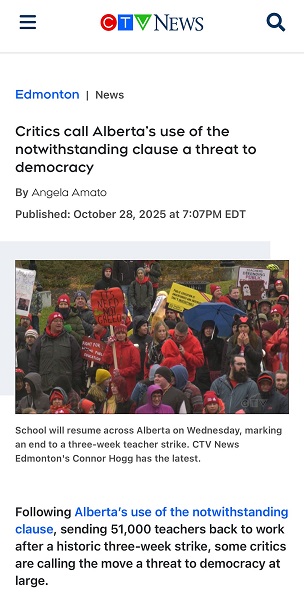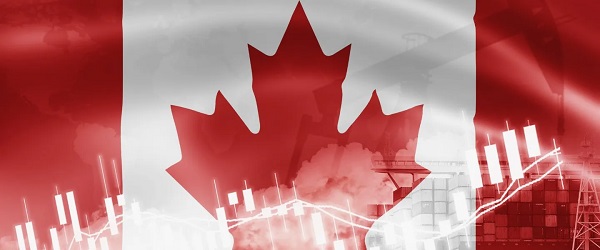Business
Elbow to the Face: What Canada Risks by Embracing Economic Nationalism

There was free trade between Canada and the U.S. before there was a country called Canada. In 1854, 13 years before Confederation, the colonies of British North America signed a reciprocity agreement with the Americans that allowed for free trade in lumber, meat, grains, coal, pitch and tar and other basic goods. This quickly led to an economic boom throughout Canada that lasted until the Americans revoked the deal in 1866.
Since then, trade relations between Canada and the U.S. have been on a merry-go-round alternating between protectionism and openness depending on the political mood in each country. It is an historical legacy that holds many valuable lessons for how Canada should respond to the current Trump tariffs. And perhaps the best source of advice can be found in what historians today call the “Nixon Shocks”.
In the early 1970s, U.S. president Richard Nixon was dogged by a new economic malaise termed “stagflation”. In response to this erosion in America’s financial might, Nixon upended global economic relations with his New Economic Policy, taking the U.S. off the gold standard, instituting wage and price controls and imposing a 10 per cent tariff on all imports. To Canada’s shock and horror, it too was subjected to Nixon’s tariffs.
During the postwar period Canada and the U.S. had slowly been embracing freer trade and so the tariffs were seen as a serious break in Canada’s access to the U.S. market. Prime Minister Pierre Trudeau argued vigorously for an exemption, but was unsuccessful. (Sound familiar?)
In response to being rebuffed by Nixon, the Trudeau government released a white paper outlining three possible reactions. The first was to maintain the status quo. Second, seek even stronger economic relations with the U.S. Third, look elsewhere. The Trudeau government found the final choice, what became known as the Third Option, to be the most attractive and pursued it aggressively.
In addition to seeking out trade with other countries, the Trudeau government also tried to expand Canada’s political and cultural relations with other countries, especially Communist countries such as the Soviet Union, China and Cuba. At home, the Third Option gave birth to many deliberately protectionism policies meant to keep the Americans at bay, including the Foreign Investment Review Agency and the National Energy Program.
The Third Option’s overarching objective was to sever Canada’s deep economic and cultural ties with the U.S. It didn’t work. There was no real diversification of Canada’s export trade away from the Americans, despite all the self-harm caused by the NEP and other policies. Today, the Third
Option is widely acknowledged to have been a complete failure.
In recognition of this failure, in 1982 Trudeau set up the Royal Commission on the Economic Union and Development Prospects for Canada headed by
Donald S. Macdonald to investigate all aspects of the Canadian economy and deliver advice on how to “respond to the challenges of rapid national
and international change in order to realize Canada’s potential.”
The Macdonald Commission’s final report, delivered in 1985 to Progressive Conservative Prime Minister Brian Mulroney was a conclusive repudiation
of the Third Option and instead called for a free trade deal with the U.S.
To his credit, Mulroney set aside his party’s old animus towards free trade and entered into negotiations with U.S. President Ronald Reagan. The
result was the 1989 Canada-U.S. Free Trade Agreement, which was later followed by 1993’s NAFTA. And while these deals caused some dislocation
to Canada’s economy, the net result has been overwhelmingly positive – the same as was the case in 1854. The very fact Canadians today consider
Trump’s tariffs to be an economic crisis reveal how important free trade with the Americans has become to Canada.
Given these lessons of history, how should Canadians respond to the Trump Shocks today?
First, there’s no getting around the fact that Canada’s prosperity will always depend on trade with the U.S. Today, as was the case in the 1970s, more
than two-thirds of Canada’s exports go south of the border. Economic nationalism is not a winning strategy, as our experience in the 1970s with the Third Option demonstrates.
Second, history also tells us that the U.S. will eventually come around to recognizing the benefits of free trade. Higher tariffs mean higher prices and
less choice for American consumers, after all. Canada’s best chance for long-term success lies in making common cause with American interests
equally hard hit by tariffs, particularly in border states.
Third, while Canada waits for the U.S. to come back to its senses, we can’t ignore our own home-grown problems. In particular, Canada needs to
address its productivity crisis. Where we were once a top tier country in terms of productivity, today we are ranked 22 nd out of 32 OECD countries.
Fixing this issue will require tough choices, including reforming the tax code, investing in basic infrastructure, promoting competition, curtailing
social programs and pushing back against Indigenous veto-seeking.
It won’t be easy, but the current bout of patriotism and a ready-made villain in Trump means Canadians may be more accept such hardships in the
short-term. We should take advantage of the opportunity.
The best response to Trump’s tariffs is not to invent new ways to hate our neighbours, but to fix our own flaws. Only when our house is back in order
will we be ready to take full advantage of the American market when freer trade returns. And based on 171 years of experience, we can be sure it will.
Peter Shawn Taylor is senior features editor at C2CJournal.ca, where the original, longer version of this article first appeared.
Business
Bank of Canada governor warns citizens to anticipate lower standard of living

From LifeSiteNews
“Unless something changes, our incomes will be lower than they otherwise would be.”
Bank of Canada Governor Tiff Macklem gave a grim assessment of the state of the economy, essentially telling Canadians that they should accept a “lower” standard of living.
In an update on Wednesday in which he also lowered Canada’s interest rate to 2.25 percent, Macklem gave the bleak news, which no doubt will hit Canadian families hard.
“What’s most concerning is, unless we change some other things, our standard of living as a country, as Canadians, is going to be lower than it otherwise would have been,” Macklem told reporters.
“Unless something changes, our incomes will be lower than they otherwise would be.”
Macklem said what Canada is going through “is not just a cyclical downturn.”
Asked what he meant by a “cyclical downturn,” Macklem blamed what he said were protectionist measures the United States has put in place such as tariffs, which have made everything more expensive.
“Part of it is structural,” he said, adding, “The U.S. has swerved towards protectionism.”
“It is harder to do business with the United States. That has destroyed some of the capacity in this country. It’s also adding costs.”
Macklem stopped short of saying out loud that a recession is all but inevitable but did say growth is “pretty close to zero” at the moment.
While some U.S. protectionist measures put in place by President Donald Trump have impacted Canada, the reality is that since the Liberals took power in 2015, first under former Prime Minister Justin Trudeau and now under Mark Carney, government spending has been out of control, according to experts. Rising inflation is rampant.
Canadian taxpayers are already dealing with high inflation and high taxes, in part due to the Liberal government overspending and excessive money printing, and even admitting that giving money to Ukraine comes at the “taxpayers’” expense.
As reported by LifeSiteNews, Carney boldly proclaimed earlier this week that his Liberal government’s upcoming 2025 budget will include millions more in taxpayer money for “SLGBTQI+ communities” and “gender” equality and “pride” safety.
As reported by LifeSiteNews, the Canadian Taxpayers Federation (CTF) recently blasted the Carney government for spending $13 million on promotional merchandise such as “climate change card games,” “laser pens and flying saucers,” and “Bamboo toothbrushes” since 2022.
Canadians pay some of the highest income and other taxes in the world. As reported by LifeSiteNews, Canadian families spend, on average, 42 percent of their income on taxes, more than food and shelter costs. Inflation in Canada is at a high not seen in decades.
Business
Canada’s economic performance cratered after Ottawa pivoted to the ‘green’ economy

From the Fraser Institute
By Jason Clemens and Jake Fuss
There are ostensibly two approaches to economic growth from a government policy perspective. The first is to create the best environment possible for entrepreneurs, business owners and investors by ensuring effective government that only does what’s needed, maintains competitive taxes and reasonable regulations. It doesn’t try to pick winners and losers but rather introduces policies to create a positive environment for all businesses to succeed.
The alternative is for the government to take an active role in picking winners and losers through taxes, spending and regulations. The idea here is that a government can promote certain companies and industries (as part of a larger “industrial policy”) better than allowing the market—that is, individual entrepreneurs, businesses and investors—to make those decisions.
It’s never purely one or the other but governments tend to generally favour one approach. The Trudeau era represented a marked break from the consensus that existed for more than two decades prior. Trudeau’s Ottawa introduced a series of tax measures, spending initiatives and regulations to actively constrain the traditional energy sector while promoting what the government termed the “green” economy.
The scope and cost of the policies introduced to actively pick winners and losers is hard to imagine given its breadth. Direct spending on the “green” economy by the federal government increased from $600 million the year before Trudeau took office (2014/15) to $23.0 billion last year (2024/25).
Ottawa introduced regulations to make it harder to build traditional energy projects (Bill C-69), banned tankers carrying Canadian oil from the northwest coast of British Columbia (Bill C-48), proposed an emissions cap on the oil and gas sector, cancelled pipeline developments, mandated almost all new vehicles sold in Canada to be zero-emission by 2035, imposed new homebuilding regulations for energy efficiency, changed fuel standards, and the list goes on and on.
Despite the mountain of federal spending and regulations, which were augmented by additional spending and regulations by various provincial governments, the Canadian economy has not been transformed over the last decade, but we have suffered marked economic costs.
Consider the share of the total economy in 2014 linked with the “green” sector, a term used by Statistics Canada in its measurement of economic output, was 3.1 per cent. In 2023, the green economy represented 3.6 per cent of the Canadian economy, not even a full one-percentage point increase despite the spending and regulating.
And Ottawa’s initiatives did not deliver the green jobs promised. From 2014 to 2023, only 68,000 jobs were created in the entire green sector, and the sector now represents less than 2 per cent of total employment.
Canada’s economic performance cratered in line with this new approach to economic growth. Simply put, rather than delivering the promised prosperity, it delivered economic stagnation. Consider that Canadian living standards, as measured by per-person GDP, were lower as of the second quarter of 2025 compared to six years ago. In other words, we’re poorer today than we were six years ago. In contrast, U.S. per-person GDP grew by 11.0 per cent during the same period.
Median wages (midpoint where half of individuals earn more, and half earn less) in every Canadian province are now lower than comparable median wages in every U.S. state. Read that again—our richest provinces now have lower median wages than the poorest U.S. states.
A significant part of the explanation for Canada’s poor performance is the collapse of private business investment. Simply put, businesses didn’t invest much in Canada, particularly when compared to the United States, and this was all pre-Trump tariffs. Canada’s fundamentals and the general business environment were simply not conducive to private-sector investment.
These results stand in stark contrast to the prosperity enjoyed by Canadians during the Chrétien to Harper years when the focus wasn’t on Ottawa picking winners and losers but rather trying to establish the most competitive environment possible to attract and retain entrepreneurs, businesses, investors and high-skilled professionals. The policies that dominated this period are the antithesis of those in place now: balanced budgets, smaller but more effective government spending, lower and competitive taxes, and smart regulations.
As the Carney government prepares to present its first budget to the Canadian people, many questions remain about whether there will be a genuine break from the policies of the Trudeau government or whether it will simply be the same old same old but dressed up in new language and fancy terms. History clearly tells us that when governments try to pick winners and losers, the strategy doesn’t lead to prosperity but rather stagnation. Let’s all hope our new prime minister knows his history and has learned its lessons.
-

 Alberta21 hours ago
Alberta21 hours agoFrom Underdog to Top Broodmare
-

 International1 day ago
International1 day agoPrince Andrew banished from the British monarchy
-

 Business1 day ago
Business1 day ago“We have a deal”: Trump, Xi strike breakthrough on trade and fentanyl
-

 Alberta1 day ago
Alberta1 day agoProvince orders School Boards to gather data on class sizes and complexity by Nov 24
-

 Business2 days ago
Business2 days agoCanada’s attack on religious charities makes no fiscal sense
-

 Bruce Dowbiggin2 days ago
Bruce Dowbiggin2 days agoGet Ready: Your House May Not Be Yours Much Longer
-

 Crime1 day ago
Crime1 day agoCanada Seizes 4,300 Litres of Chinese Drug Precursors Amid Trump’s Tariff Pressure Over Fentanyl Flows
-

 Alberta1 day ago
Alberta1 day agoHow one major media torqued its coverage – in the take no prisoners words of a former Alberta premier











